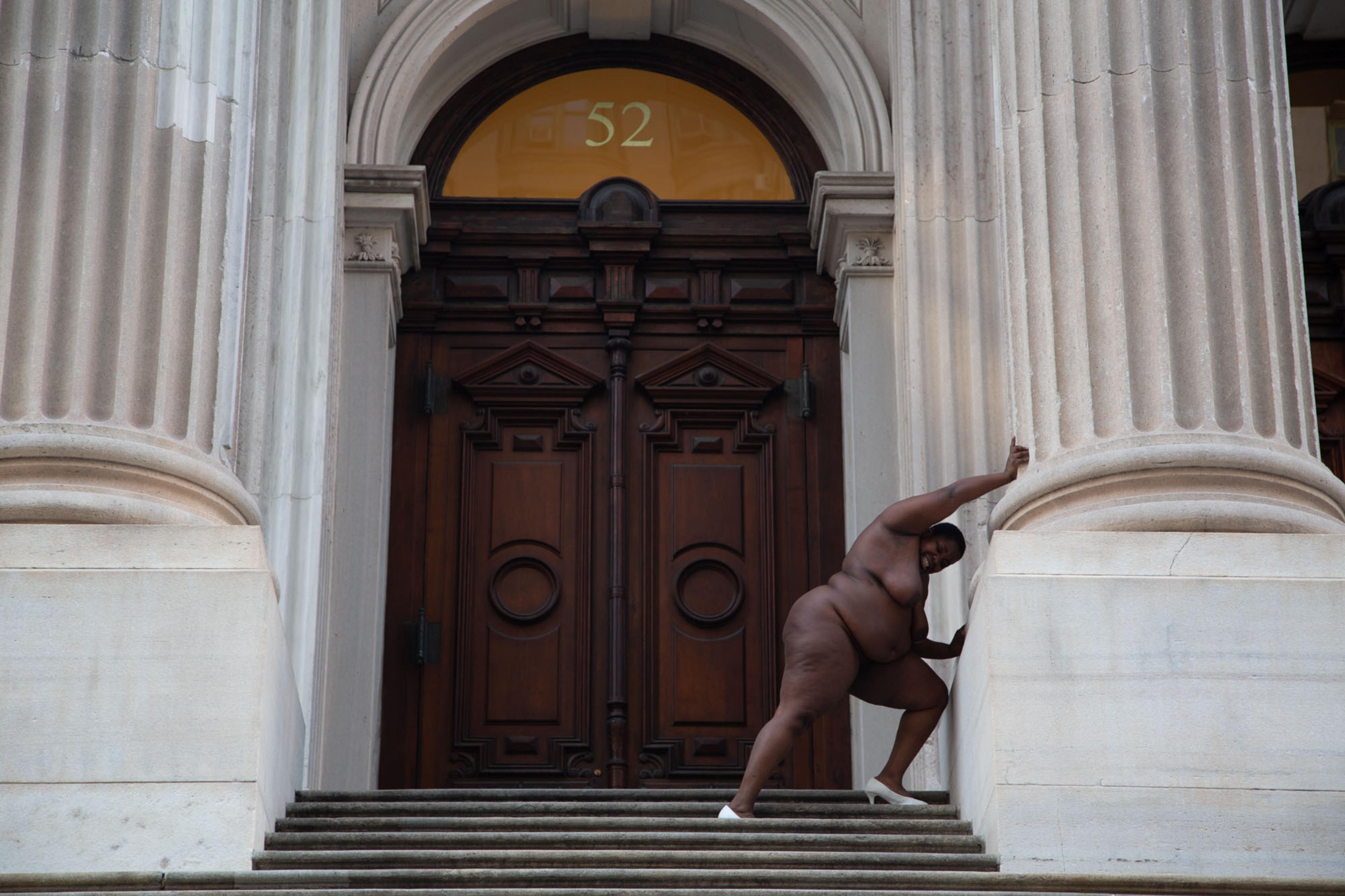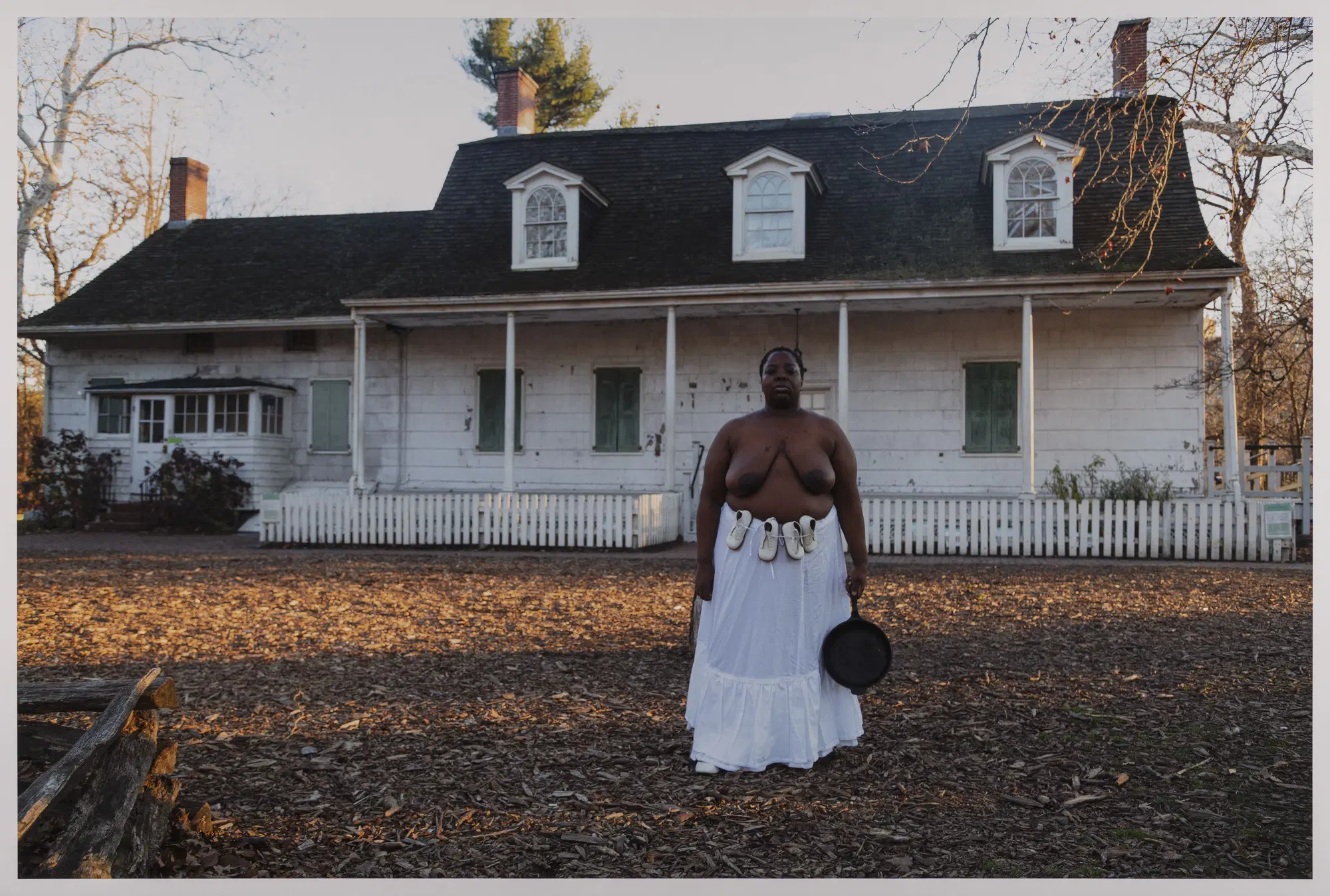Nona Faustine: White Shoes

“What does a Black person look like today in those places where Africans were once sold, a century and a half ago?” asks artist Nona Faustine (born 1977). Using her own body, she interrogates this question in her photographic series White Shoes. More than 40 self-portraits show Faustine standing in sites across New York City, from Harlem to Wall Street to Prospect Park and beyond, that are built upon legacies of enslavement in New York—one of the last Northern states to abolish slavery. On her feet are a pair of sensible white pumps, which speak to the oppressions of colonialism and assimilation imposed on Black and Indigenous peoples locally, nationally, and globally. Otherwise nude, partially covered, or holding props, Faustine is at once vulnerable and commanding, standing in solidarity with ancestors whose bodies and memory form an archive in the land beneath her shoes.
Nona Faustine: White Shoes is the artist’s first solo museum exhibition and the first complete installation of this consequential series. Born and raised in Brooklyn, Faustine urges us to think critically about the hidden, often traumatic histories of the places we call home. As such topics are being erased from public school curricula nationwide, this display is a moment to consider the enduring impact that the past has on our present.
Nona Faustine: White Shoes is organized by Catherine Morris, Sackler Senior Curator, Elizabeth A. Sackler Center for Feminist Art, with Carla Forbes, Curatorial Assistant, Elizabeth A. Sackler Center for Feminist Art, Brooklyn Museum.
Generous support is provided by

Additional support is provided by Sarah Miller Meigs and the Helene Zucker Seeman Memorial Exhibition Fund.
Organizing department
Elizabeth A. Sackler Center for Feminist Art



